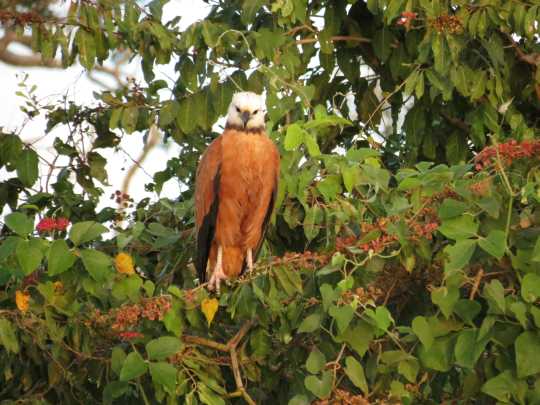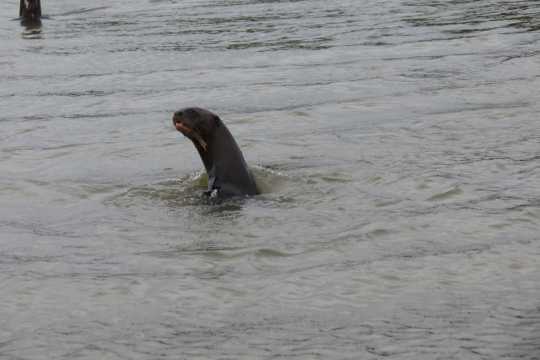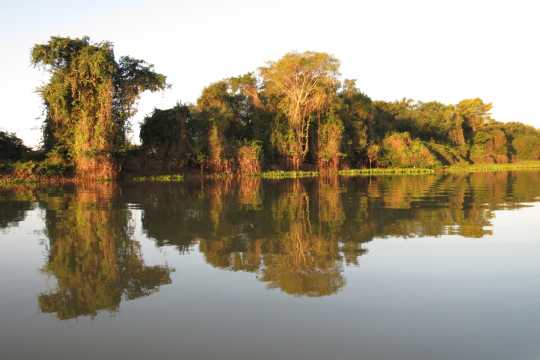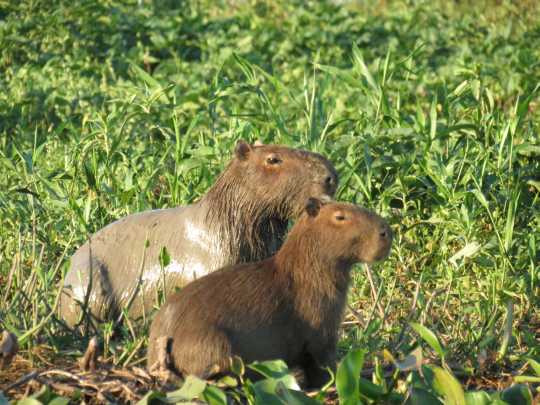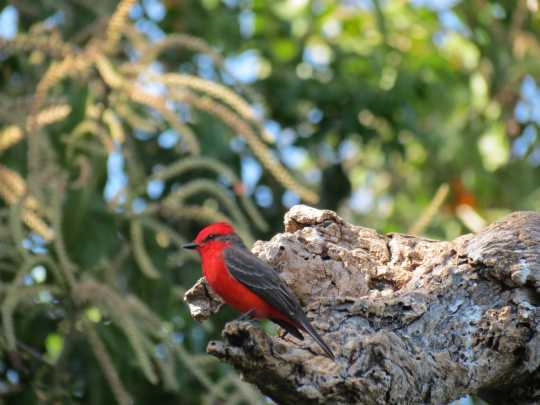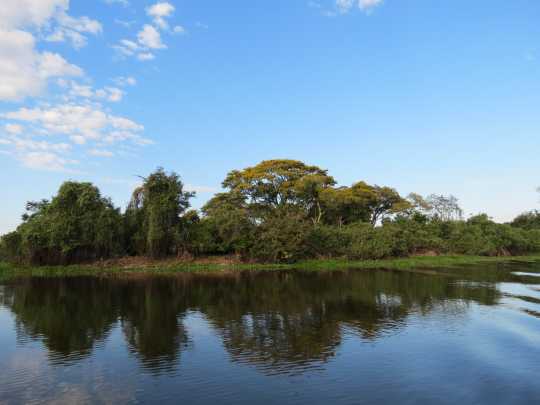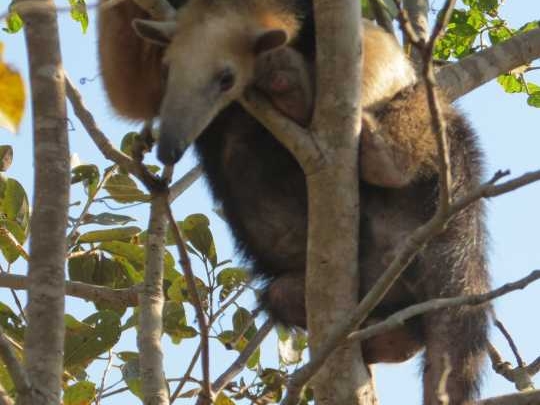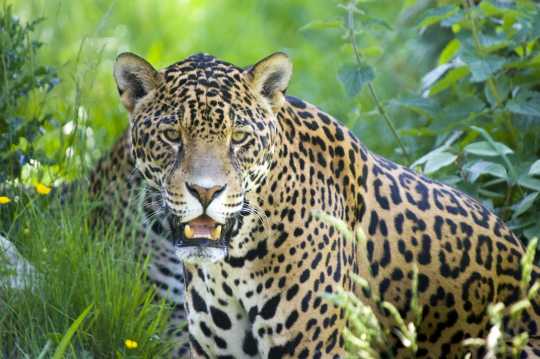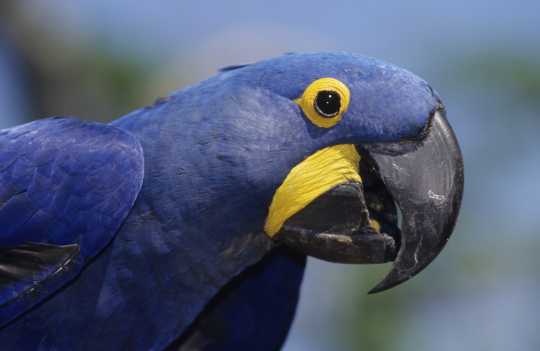Wild Brazil … Maned wolves, Jaguars, Giant Otters and Hyacinth Macaws
Brazil’s wildlife includes some of the most exotic and spectacular mammals, birds and reptiles you could ever hope to see. It ranks on a par with the Serengeti, with all the colour and panache of South America.
It’s a massive country with a diverse landscape, but there is one area that is top of the list for wildlife experiences has to be – The Pantanal.
The Pantanal, of which 3/4 is in Brazil, is a wild wonderland – what makes it so special ?
It is the largest wetland in the world of 140,000 – 210,000km2 – so about the size of Greece!
Like The Amazon, the Pantanal has an outstanding natural biodiversity but with the added advantage of wide open rivers and channels making it a natural gallery for enjoying all its wildlife – a true ‘Garden of Eden’.
- 470 exotic birds, including the amazing Hyacinth macaw
- 130 mammals , including the magnificent jaguar, giant otters, giant anteaters, Capybaras and even the chance of seeing the endangered maned wolf
- 80 species of reptiles including caimans
Days spent gliding through the Pantanal’s channels searching the river banks for the elusive jaguar, observing families of capybaras, watching flocks of birds fly off upstream and being up close to Giant otters couldn’t be more perfect. As well as the wetland areas there are large stretches of Cerrado (woodland savanna) and forests teaming with bird life, reptiles and the endangered Maned Wolf.
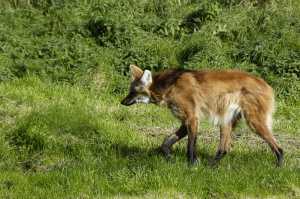 Yes, we do mean Maned wolves – a rare and little known spectacular canid. So called because they have a thick dark mane running down the centre of their backs. Spectacular because of their bright orange/red long coat. So, what do we know about them?
Yes, we do mean Maned wolves – a rare and little known spectacular canid. So called because they have a thick dark mane running down the centre of their backs. Spectacular because of their bright orange/red long coat. So, what do we know about them?
- Maned wolves rotate their large ears to listen for prey animals in the grass. They tap the ground with a front foot to flush out the prey and pounce to catch it.
- Maned wolves are monogamous. Though the male and female generally live solitary lives and come together only during the breeding season, they share defended territories. Both male and female maned wolves use their urine to communicate, e.g. to mark their hunting areas, or the places where they have buried hunted prey. The urine has a very distinctive smell, which some people liken to cannabis.
- The Maned wolf is also known for its distinctive odour, which has earned it the nickname “skunk wolf.”
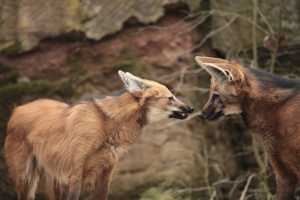 The Maned wolf is the largest canid of South America, resembling a large fox with a beautiful dark bushy mane. This intriguing canid lives in open and semi-open habitats, savannah and marshland in central and south eastern Brazil, Paraguay, eastern Bolivia, and northern Argentina. They are rarely seen in the Pantanal but can be found in Brazil’s Serra da Canastra National Park & at the Sanctuario de Caraca where the monks feed some habituated wolves every night.
The Maned wolf is the largest canid of South America, resembling a large fox with a beautiful dark bushy mane. This intriguing canid lives in open and semi-open habitats, savannah and marshland in central and south eastern Brazil, Paraguay, eastern Bolivia, and northern Argentina. They are rarely seen in the Pantanal but can be found in Brazil’s Serra da Canastra National Park & at the Sanctuario de Caraca where the monks feed some habituated wolves every night.
The Maned wolf stands about three feet tall at the shoulder and weighs about 50 pounds. It looks like a long-legged fox, with a reddish-brown coat and dark bushy mane along its back. Its ears are large and long (7 inches), its throat and tip of the tail are white, and its legs are mostly dark.
They are omnivorous, eating small mammals, insects, reptiles, birds, bird eggs, fruits, and other vegetation. Unlike most other large canids the Maned wolf does not form pack. It hunts alone, usually between sundown and midnight. It kills its prey by biting on the neck or back, and shaking it violently if necessary.
Monogamous pairs may defend a shared territory of about 30 km2 (12 sq mi), though the individuals themselves may seldom meet, outside of mating. The territory is crisscrossed by paths that the Maned wolf creates as they patrol at night. Several adults may congregate in the presence of a plentiful food source; a fire-cleared patch of grassland, for example, which would leave small vertebrate prey exposed while foraging.
The mating season is from November to April, with gestation lasting 60 to 65 days. A litter may have from 2 to 6 black-furred pups, each weighing about 450 g (16 oz). These pups are fully grown in about one year. During that year, the pups are known to rely on their parents for food.
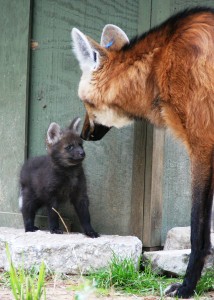
A Maned Wolf and her pup
They have almost no natural enemies, but nevertheless are in great danger because they need wide, uninterrupted spaces. Habitat destruction, road kills and diseases transmitted from domestic stock are the main threat to Maned wolves.
Since its classification as a vulnerable species by the Brazilian government, it has received greater consideration and protection from most people. The Maned wolf is generally shy and flees when alarmed, so it poses little direct threat to humans. It occurs in several protected areas, including the national parks in Brazil. The Maned wolf is well represented in captivity, and has been bred successfully at a number of zoos, particularly in Argentina.

Jaguar and Maned Wolf Conservation
You can join renowned “wolf man”, Prof Claudio Sillero and research biologist Rogerio Cunha de Paula on the first ever Jaguar and Maned Wolf Conservation Safari to the Pantanal and Serra da Canastra National Park
Contact safari@spencerscott.co.uk. +44 (0)1825 714310


